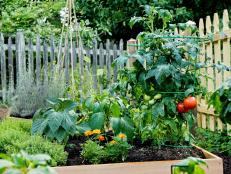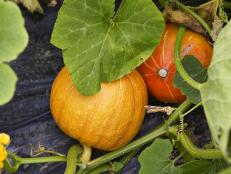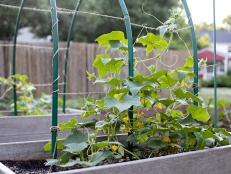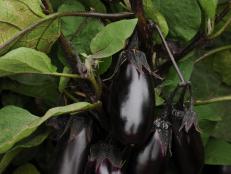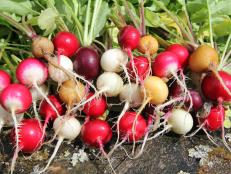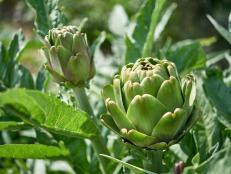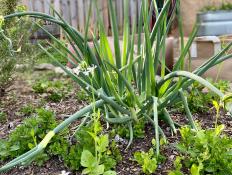Staggered Planting: What It Is and Why You Should Be Doing It
Use this trick of shifting planting dates to manage harvests of edible plants or flowers.

Ball Horticultural Company
Growing your own food is rewarding in many different ways. But when a harvest overtakes your kitchen and you’re sneaking kohlrabi into book club swag bags or leaving zucchini calling cards on unsuspecting doorsteps, you might start regretting your tidy rows of homegrown crops. Take heart—you’re not the first gardener to get slammed with a hefty harvest of (fill in the blank). It’s time to learn a new garden technique: staggered planting.
With staggered planting, instead of planting, for instance, all of your radishes at once, you sow a few seeds every week or two over the course of a month. By staggering planting dates, you extend the harvest and keep it coming in at a reasonable pace.
What crops work best with staggered planting?
If your growing season is long enough, you can stagger plant just about any crop.

Julie Martens Forney
Most gardeners use staggered planting methods with plants that ripen all at once—things like leaf lettuce, spring onions, beets, salad greens, radishes, turnips and carrots.

Julie Martens Forney
Staggered planting offers a terrific workaround with crops that tend to come under attack by pests and diseases. This group includes bush beans, cucumbers and summer squash, like zucchini, patty pan and crookneck (anything squash vine borers attack). In these cases, by planting successive crops, you’ll have a harvest ripening on the second round of plants when pests and diseases wipe out the first ones.

All-America Selections at All-AmericaSelections.org
Melons typically need a long growing season to ripen, but when you have 10 watermelons ready to eat, that much cold storage can be hard to come by. With melons, staggering three plantings by five days can bring in a manageable harvest in even the shortest growing seasons, allowing you to savor all the (literal) fruits of your labors.
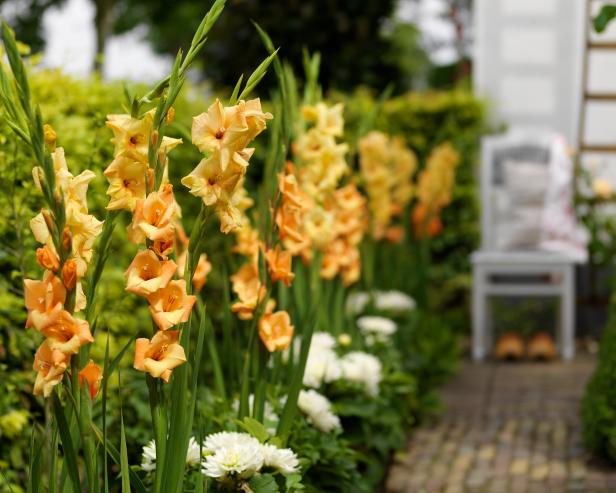
iBulb.org
Don’t count out flowers as you craft your staggered planting strategies. With flowers like gladiolus, that are one-flowering-stem-wonders, staggered planting means you can keep the flowers coming—all season long. Other good flower candidates for staggering include calla lily, cosmos, bachelor’s buttons and zinnias.
How does staggered planting work?
It’s really simple. Make your best guess on how much of a crop you typically use in a given week and plant that much at a time. You’ll have to do some calculations on timing based on your growing season’s average temperatures to determine if crops have time to mature and yield a harvest. In general, though, you can tuck seeds into soil every 10 to 28 days, depending on the crop. Adapt some of these general planting timelines to your growing region:
- lettuce, onions, peas—every 10 days
- peas and bush green beans—every 14 to 21 days
- radishes and turnips—every 10 to 14 days
- summer squash and cucumber—every 21 to 28 days, with smaller plantings after a first big one
- melons—every 5 to 10 days
- basil—every 14 days
Tips for Staggered Planting
Lay in a seed supply. Stock up in spring when seed is readily available, especially if you plan to sow any crops for fall harvest.
Amend all planting areas before starting so you don’t disturb existing crops when sowing subsequent ones.
For summer plantings, grow your own seedlings for subsequent crops in cell packs or small pots. This works really well with squash, basil and cucumber.
Experiment with early-ripening varieties to speed up the harvest. Take good notes on what grows well for you and what your family enjoys eating.








